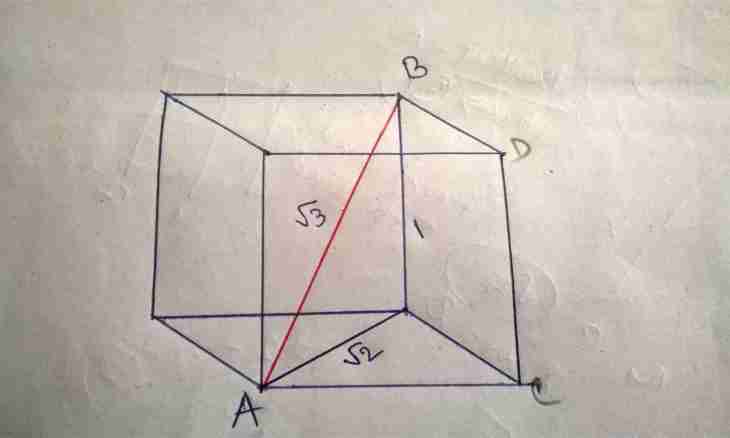The quadrangular pyramid is a pentahedron with the quadrangular basis and a side surface from four triangular sides. Side edges of a polyhedron are crossed in one point — pyramid top.
Instruction
1. The quadrangular pyramid can be regular, rectangular or any. The regular pyramid has the correct quadrangle in the basis, and its top is projected in the center of the basis. The distance from pyramid top to its basis is called pyramid height. Side sides of a regular pyramid are isosceles triangles, and all edges are equal.
2. In the basis of the regular quadrangular pyramid the square or a rectangle can lie. Height H such pyramids is projected in a point of intersection of diagonals of the basis. In a square and a rectangle of diagonal of d are identical. All side edges of the L pyramid with the square or rectangular basis are equal among themselves.
3. For finding of an edge of a pyramid consider a rectangular triangle with the parties: a hypotenuse - a required edge of L, legs — height of a pyramid of H and a half of diagonal of the basis of d. Calculate an edge on Pythagorean theorem: the square of a hypotenuse is equal to the sum of squares of legs: L²=H²+(d/2)². With a rhombus or a parallelogram in the basis the opposite edges are in pairs equal in a pyramid and are determined by formulas: L ₁²=H²+ (d /2)² and L ₂²=H²+ (d /2)², where d ₁ and d ₂ — basis diagonals.
4. In a rectangular quadrangular pyramid its top is projected in one of tops of the basis, the planes of two of four side sides are perpendicular to the basis plane. One of edges of such pyramid coincides with its height of H, and two side sides are rectangular triangles. Consider these rectangular triangles: in them one of legs — the pyramid edge coinciding with its height H, the second legs — the parties of the basis of an and b, and a hypotenuse — unknown edges of a pyramid of L ₁ and L ₂. Therefore, find two edges of a pyramid on Pythagorean theorem as hypotenuses of rectangular triangles: L ₁²=H²+a² and L ₂²=H²+b².
5. ₃ a rectangular pyramid find the fourth edge of L which remained the unknown on Pythagorean theorem as a hypotenuse of a rectangular triangle with legs of N and d where d is the basis diagonal which is carried out from the basis of the edge coinciding with height of a pyramid of N to the basis of a required edge of L ₃: L ₃² = H²+d².
6. In any pyramid its top is projected in an accidental point on the basis of. For finding of edges of such pyramid consider consistently each of rectangular triangles in which a hypotenuse — a required edge, one of legs — the pyramid height, and the second leg — the piece connecting the corresponding top of the basis to height basis. For finding of sizes of these pieces it is necessary to consider the triangles formed in the basis at connection of a point of a projection of top of a pyramid and corners of a quadrangle.

